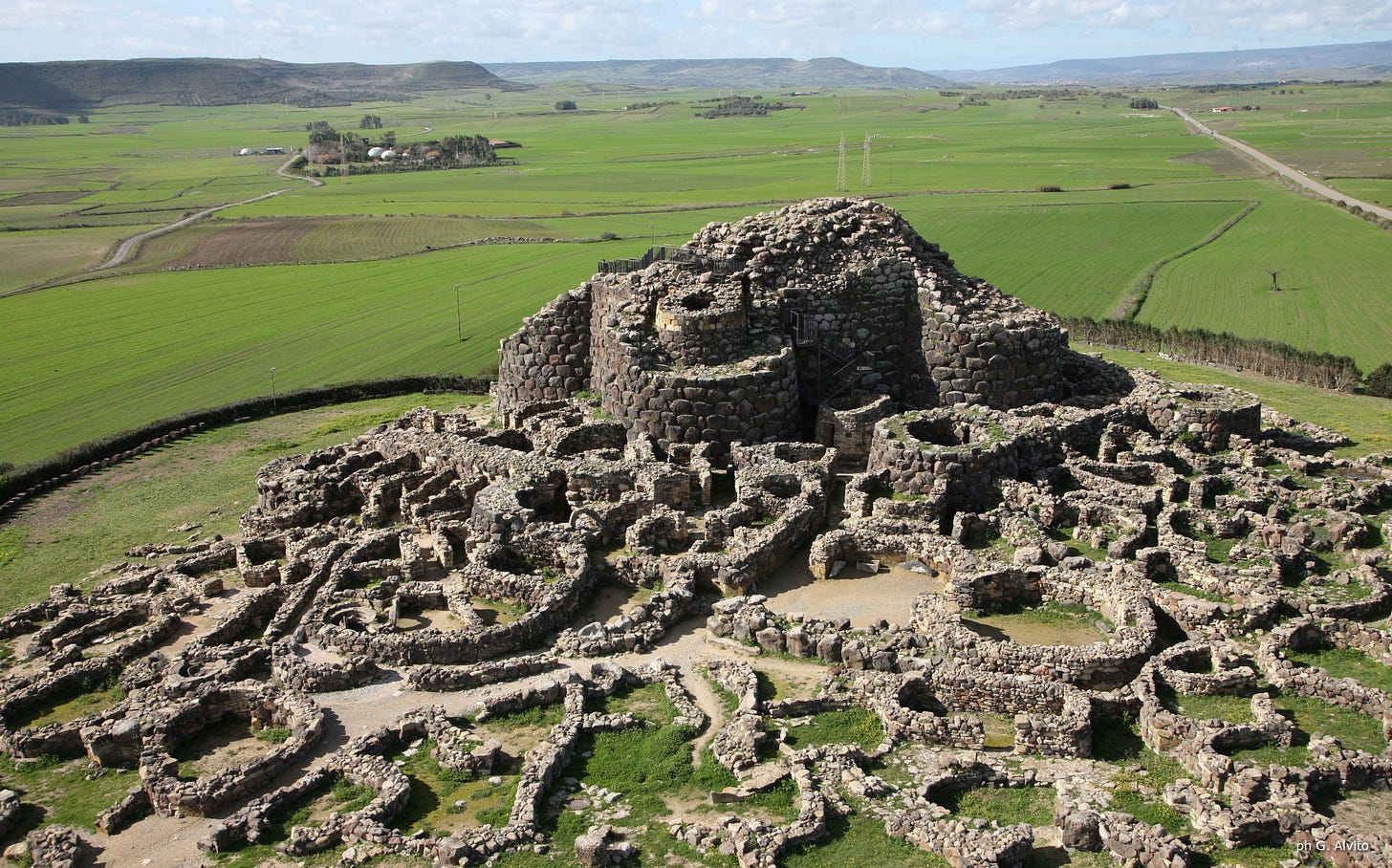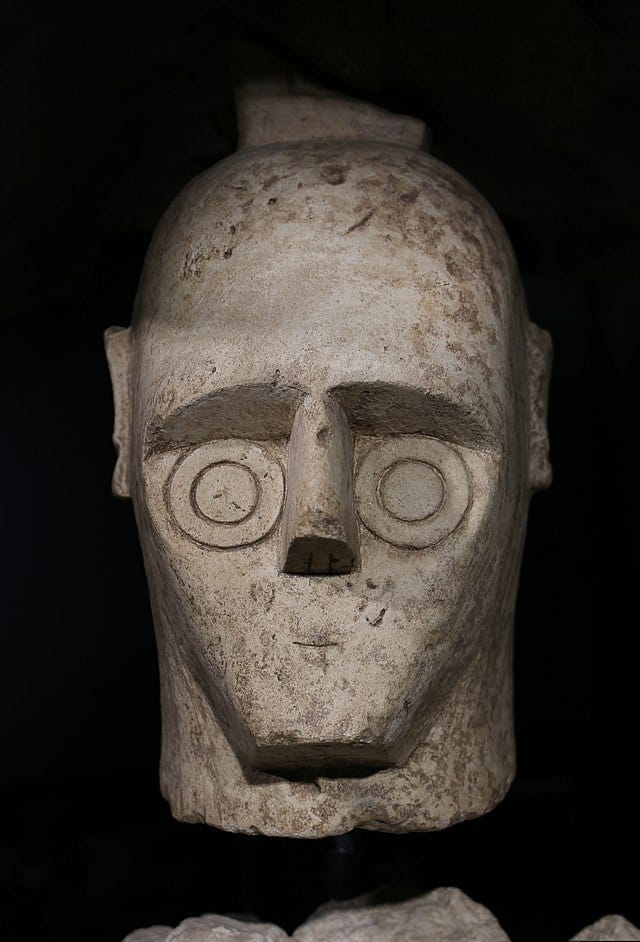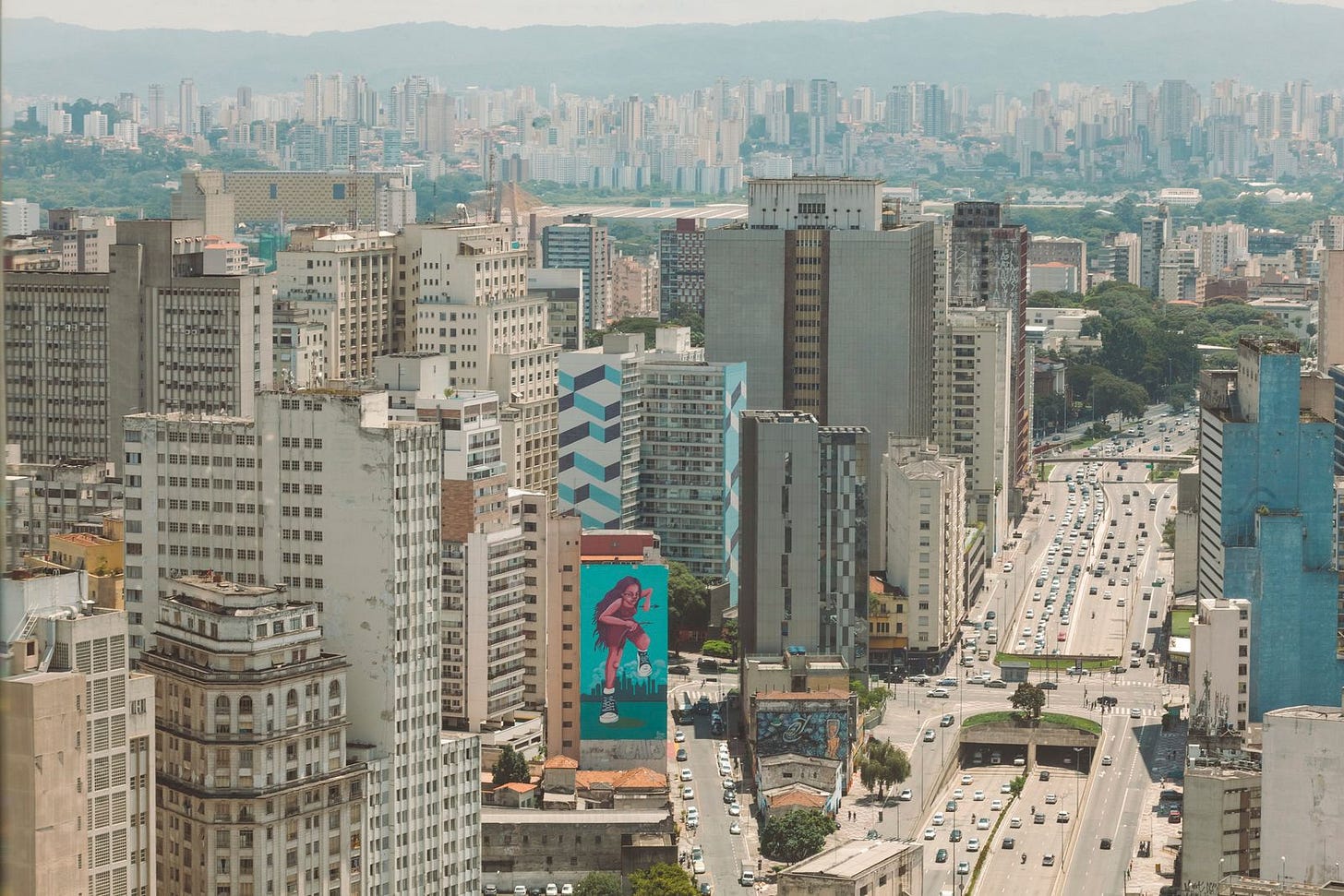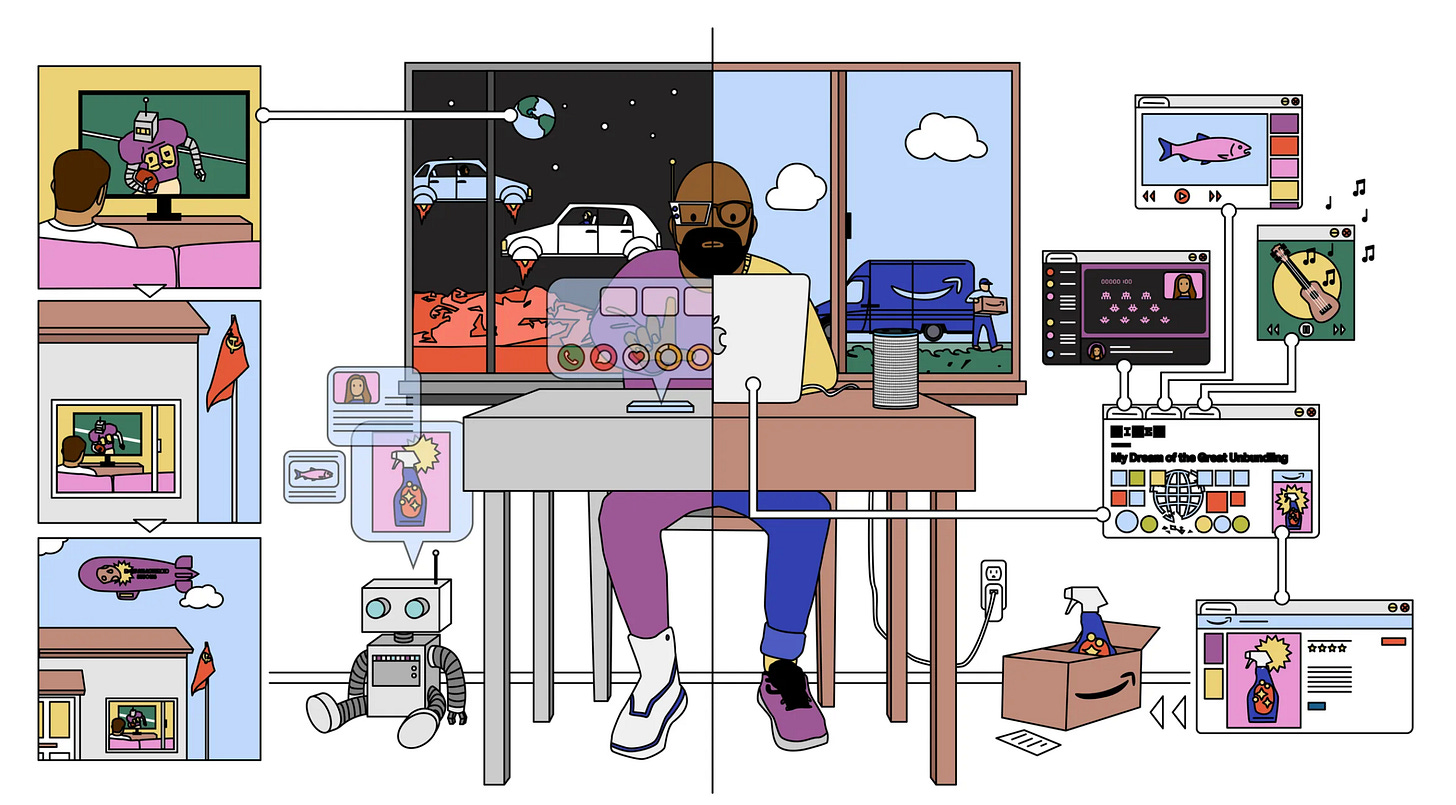🗿✨The Nexialist #0083
Nuragic Civilization | Sa Sartiglia | City: Megasculpture | Brasilia: Urbanism Utopia? | The Dystopia of São Paulo | Bad at Predictions | Global Tech’s Changemakers | BZRP + VILLANO ANTILLANO | Her
Welcome to my weekly collection of real and virtual collection of brainsparks, The Nexialist
Welcome back to me (?) I’m already at full blast this week: work, Dutch classes and Tropikali Sunset happening next Sunday with another set of mine filled with fabulous Brazilian pop. Sardinia was a joy: the beaches, the weather, the food, the company (thank you Andrea, family and friends), the history, the bidet (!). Got to stimulate and recharge my brain by practicing Italian and learning about the local culture, my taste buds with the local cheeses and beer and my skin with all the sun and water. I even struggled a bit to be in front of the computer, but I hope you enjoy my attempt to bring some of my brainsparks from the real world into this Nexialist. Enjoy!
1 year ago » 🐕✨The Nexialist #0034 : Doggos | Cat Jams | Bunny is a Rider | Codex Seraphinianus | Glitched Nostalgia | Back to the Future: Identity | Public Service Broadcasting
🗿Nuragic Civilization
I was so impressed with all the layers of traceable history that Sardinia has. We went to the Museo Archeologico Nazionale di Cagliari and I was touched to learn about this quite developed civilization that was once there and their pervasive architecture, such as the nuraghe and giants’ tombs. Also, before them, there were other pre-historic civilizations living there. I got some texts from the museum that got me some brainsparks and I would like to share them with you:
Sardinia during the nuragic age: territory as text
The English word text comes from the latin textus: literally fabric, the product of weaving, crisscrossing and tying of threads. It isn't a generic and chaotic set of elements, but a set of elements organically connected to compose a cloth. This is what we mean when we say that a territory can be interpreted as a text.
Now, if there ever was a historical period when the territory of Sardinia appeared as a text, this certainly was the nuragic age. During that period the whole island was marked by the presence of a peculiar and pervading architectural sign: the nuraghe. Even today, nuraghi can be found everywhere. Their number, presumably about 8.000, and their distribution transformed Sardinia into a system controlled by a network. In addition to the nuraghi, the settlements, the collective tombs (called tombs of the giants) the temples and sanctuaries, represent the knots of this network controlling any moment and aspect of the island's life. Policy, Inner and outer trades and exchanges moments of communal and religious life: everything happened inside this thick architectural fabric symbolic reflection of the cultural fabric. Such a network of relationships, made evident by the architectural fabric, leads us to imagine a cultural universe normally ruled by peaceful and collaborative attitudes, capable to keep the inescapable moments of conflict under control In contemporary terms, nuragio Sardinia was a globalized reality.
In the 70s they found these giant sculptures and named them Kolossoi. They look like they come from the future, but it is estimated they were made between the 11th and the 8th century BC.
[…] These sculptures came to us dismembered into 5178 fragments, but many more are missing, destroyed, perhaps dispersed faces, arms, busts, fractured, dismembered bodies: so they appeared when we found them.
Unknown motivations led the hands that crumbled them. One fact seems evident. The statues were mangled to destroy their ability of transmitting sense, to prevent them from conveying the symbolic power they carried and preserved.
Against such violence, an act of love brought the statues back to life: a restoration that gives the fragments a chance to reassemble, to become again individuals and regain their symbolic power. So they could rise back to their standing position and, though partially mutilated, regain their features. But not a single statue could be totally reconstructed. Several human figures reappeared: archers, warriors, boxers: models of simple and complex nuraghi ( e .with one or more towers). And the truncoconical boety's.
After helping them to stand up again, now we must help them to communicate. It will not be an easy challenge. Even the simple act of naming and describing them is incredibly hard since we miss the linguistic universe which resounded around them. But we must try to lend them a voice, to translate them not to betray them.
🎭Sa Sartiglia
For a long time, I thought Carnaval (or Carnival) was celebrated only in Brazil. I was surprised to learn that in Sardinia, there are different carnival traditions, and Sa Sartiglia got me very curious due to its mystery (and a bit creepy masks). These faceless equestrians are competing to get tin stars using their swords.
Traditionally, a tournament takes place on both days, with the Sunday match performed by local farmers, and the Tuesday match being undertaken by local carpenters. Regardless of the day, the spectacle is the same: equestrian performers don blank-faced masks and ride elaborately decked-out horses through the streets of Oristano. Watched by crowds of onlookers, the performers speed toward the chapel, in front of which hangs a tin star with a hole in the middle. The idea is for the rider to skewer and collect the star with a sword. Sometimes this requires standing atop the moving horse. Then at the end of the festivities, the amount of stars gathered indicate how successful the farming and carpentry will be in the coming year.
🏙City: Mega Sculpture
Juan sent me this link and I fell in love with this mega sculpture by Michael Heizer, which Was a Mystery in the Desert for 50 Years. The idea that he took his whole life to envision and make this is already fascinating enough. There is also this feeling of a ghostly place from a weird dream, or even inside the metaverse, except it is reality. It’s worth checking out their website for the immersive experience with the images, videos and story.
Only from the air does the layout finally resolve into an elegant glyph. But “City” is not meant to be seen from above or all at once or in photographs or drone footage.
It’s meant to be trekked and explored on foot, slowly, at eye level, where the site swallows you up.
You’re meant to suffer its distances, its depressions and swells, and hear the crunch of gravel — to give yourself over to the peace and quiet, which itself takes on a sculptural presence. You’re meant to adapt to the subtle shifts in a desaturated palette of beiges, grays and dusky reds, and to notice the virtuosity of slender concrete curbs drawing lines in space that snake the length of several football fields.
Read: It Was a Mystery in the Desert for 50 Years by Michael Kimmelman
🇧🇷Brasilia: Urbanism Utopia?
This masterpiece above reminded me of the controversial design of modernist Brasilia, which was created with the hopefulness and optimism of that period, but did not deliver its promise (maybe to some people). I found this documentary and this article that explain it better.
Additionally, his formal approach didn’t take into account how city systems work: transportation, economics, public life, and commerce. As Jane Jacobs wrote in Death and Life of American Cities, the famous salvo against modernist urbanism, “To approach a city, or even a city neighborhood, as if it were a larger architectural problem, capable of being given order by converting it into a disciplined work of art, is to make the mistake of attempting to substitute art for life. The results of such profound confusion between art and life are neither art nor life. They are taxidermy.”
Read: Inside Brazil’s ‘cautionary tale’ for utopian urbanists by Diana Budds | Curbed
🌃The Dystopia of São Paulo
This article has been living rent-free in my mind since I read it. Nicola Abé narrates different stories of people living in São Paulo to help us realize how it has become a symbol of inequality. While homeless people struggle to find food and shelter, billionaires are building their empires and planning dinners. I’ll put the beginning of the article below. It could be start of a dystopian novel, but it is just reality. It ends on a hopeful note, if you want to read it.
The sun is blazing down from the midday sky. A man is kneeling on the sidewalk, bending forward to pound his head against the pavement. Next to him, there's a box full of white cleaning rags. "God, please help me," he begs. "I’m not selling anything. Absolutely nothing."
He sobs and once again pounds his forehead onto the sidewalk. People wind through the cars stuck in traffic here in the center of São Paulo, offering drivers chewing gum or Kleenex. Children hold up cardboard signs reading "Fome," or hunger.
"São Paulo is for South America what Rome was for the empire," says another man, as he sinks into a velvet sofa inside a palace. A Picasso is hanging on the wall and a cook is preparing a meal of shrimp and duck in the kitchen. The man’s name is Nelson Wilians, and he owns one of the largest law firms on the continent. His wife Anne leads the couple's philanthropic efforts. They can hardly go outside without bodyguards, but that doesn’t bother him. "I love the city with all of its virtues and vices," he says.
Read: The Dystopia of São Paulo Holds the Key To Brazil's Transformation by Nicola Abé, Der Spiegel
🔮Bad at Predictions
Gustavo recently shared this WIRED article. Why Humans Are So Bad at Seeing the Future, and it was a great reminder that: “People tend to make predictions while looking through their own narrow lens. The real vision lies in seeing connections.”
What I took away from The Book of Predictions, 40 years later, is to watch for the curious and interesting intersections between very large things. Look for points of contact or points of conflict. Pick two enormous forces and wonder how they connect. Climate and transit. Software-as-a-service and protest movements. Pandemics and entertainment. You can’t predict the future. You can only better understand the layers and let your mind wander over them until you find a connection worth making and a new thing worth building, even if you’re the only one who sees it. You can give it a name and believe in it, and try to make it come true. That’s progress.
Read: Why Humans Are So Bad at Seeing the Future | WIRED
🌍Global Tech’s Changemakers
Rest of World, which always manages to have such a unique and plural take at the tech world, made this wonderful list to help us escape from the same perspectives. “From tech leaders, innovators, and investors to activists, Rest of World identified 100 people outside Silicon Valley and the West whose efforts directly impact countries where the majority of the world’s population lives.”
Read: RoW100: Global Tech’s Changemakers - Rest of World
🎙BZRP + VILLANO ANTILLANO
Thank you, Fatima, for showing me this. BZRP, or Bizarrap, is an Argentinian producer/DJ/beat-maker, who invites rappers to freestyle to his beats in the BZRP Music Sessions. In this video, you can see Villano Antillano, Puerto Rican trans icon who is making waves. Press play and enjoy (it has subtitles!)
Read: Villano Antillano Is Making History: ‘We Have to Be Proud and Stand Tall’ | Rolling Stone
💅🏾Her
This is also living rent-free in my head. I just love the beats, the rap, the outfits and the choreo. Get ready to be brain-washed if you haven’t been yet.
🫀If anything made your brain tingle, click like, and please share it with your friends. It helps The Nexialist to reach more curious minds.
🥰If someone amazing sent it to you, tell them you love them, and you can subscribe at thenexialist.substack.com.
❓If you want to know what a Nexialist is, click here.
💌Your feedback is highly appreciated, you can e-mail me or fill in this short survey. Thank you! 🙏🏻
🔌Let’s Collab?
I truly believe innovation comes from bringing improbable areas together, and that’s why I called this project The Nexialist. Some sectors are known to be self-referencing and hermetic. Sometimes teams are on autopilot mode, focused on the daily grind, which hinders innovation. As a Nexialist, I like to burst these bubbles, bringing references from different areas, and maintaining teams inspired and connected to the Zeitgeist.
I offer inspiration sessions, called Brainsparks, creative desk research (Zeitgeist Boost), Plug’n’Play deals for workshops and sprints, and other Bespoke formats. If you want to know more about this, send me an e-mail with your challenge(s) and we can figure something out together. Check out my website and some work I’ve done below:










